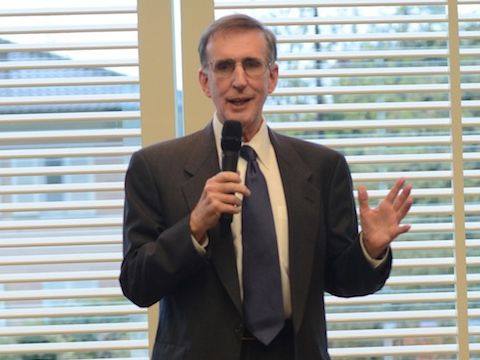He didn’t predict that the unsecure network he built would today allow hackers to take down websites or extract private information.
In the 1970s, only universities that held military and Department of Energy contracts could use the first packet-switching computer network called the Advanced Research Projects Agency Network (ARPANET). Many other universities longed to connect to ARPANET to share information and stay competitive, so Landweber proposed another academic packet-switching network, CSNET, in 1979.

Not everyone was optimistic about the technology. Some reviews of Landweber’s proposal said that the Internet could never scale to 200 universities and that it demanded too much computing power to run on ordinary computers. However, The National Science Foundation gave $5 million to fund the project in 1981, and Landweber got building.
In addition to building the network, Landweber built electronic-mail, directory, and file-sharing software to run on top of CSNET. In the span of four years, more than 200 universities, organizations, and companies were connected to CSNET, quelling earlier concerns that the network couldn’t operate on a large scale. “This was the first time most of the people in these computer science programs had used email,” says Landweber.
As CSNET became successful among researchers in America, Landweber turned his sights internationally. “I realized very early that CSNET was going to be international, so starting in 1982 I got together with people all over the world to help them coordinate their networks,” says Landweber. “Everyone understood that we would have to connect the network in Japan, Italy, Korea, Chile, and so on to the network in the U.S.”
Four years after Landweber launched CSNET the National Science Foundation was ready to build a network to connect five supercomputers at universities across the U.S. in 1985. The National Science Foundation Network (NSFNET) was based largely on CSNET’s technology and network framework. When Tim Berners-Lee debuted the world wide web, which ran on top of technology created from NSFNET, people outside of the academic community were turned on to the Internet for the first time.
Thirty years later, Landweber hasn’t strayed far from his seminal work. He’s currently involved with the Global Environment for Network Innovations (GENI) project to create faster and more secure networks.
Often when a hacker takes down a website or steals account information, they are exploiting security holes left over from the open networks of the 80s. “The current Internet has serious flaws,” says Landweber. “The internet was never designed to be secure, and in the formative days, privacy wasn’t that much of an issue,” says Landweber.
The problem stems from the origins of CSNET, when security wasn’t a concern. Scientists shared information freely and were receptive to an open network that fellow academics could access. “[CSNET] was a research vehicle that became a commercial communication vehicle for the rest of the world,” Landweber says. “But there was insufficient attention paid in the early days to questions like security.” Since the network wasn’t secured to begin with, it has led to security and privacy problems that companies and governments face today.
Landweber is quick to say that no person or group has an answer to today’s network security predicaments. He describes the fight between hackers who steal information, computers that churn out spam, government forces trying to counter attacks, and researchers working to close security gaps as a cyber war that is still waging. Researchers and advisers with the GENI project, including Landweber, are helping to build software-defined networks, one attempt to cull the war that could send data more securely. They’re also building experimental frameworks for researchers to test the next network technologies.
Though Landweber has stepped back from getting his hands dirty with building networks, he’s advising the next crop of computer scientists to build the next version of the Internet. He’s also as enthusiastic as ever about computer science: “What I love most about this field is that no matter what you’ve done in the past, the future is always more exciting.”